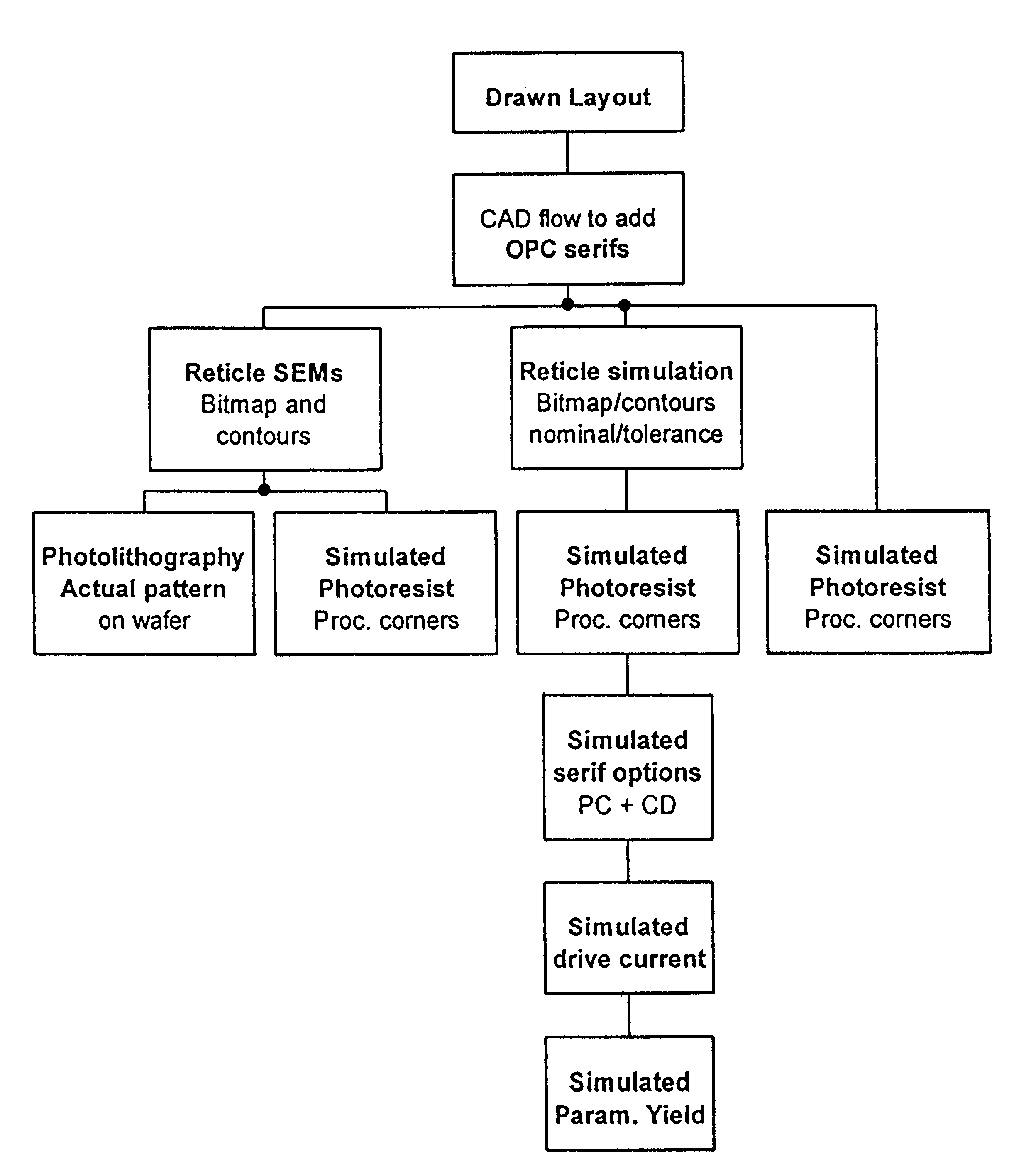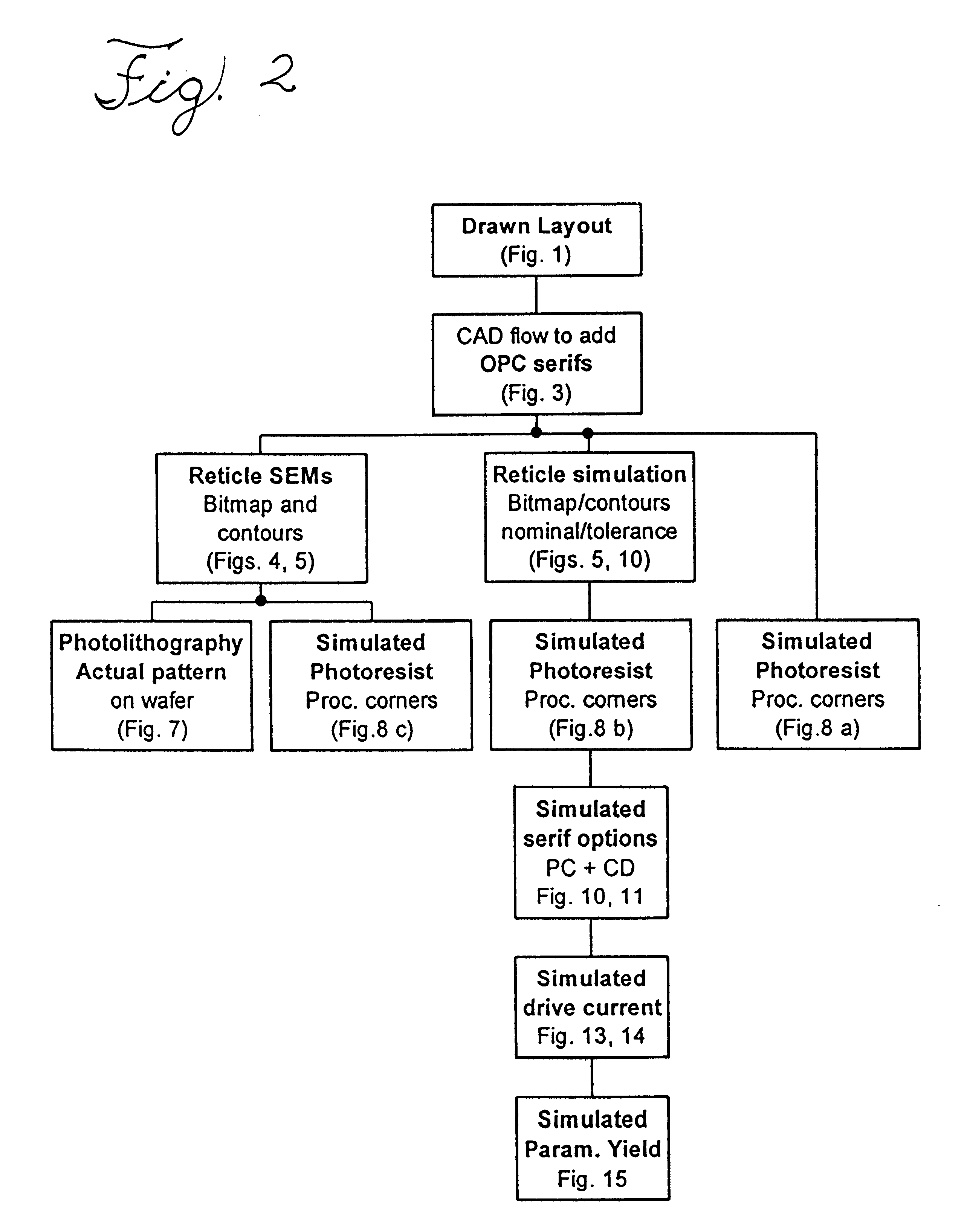Integrated scheme for predicting yield of semiconductor (MOS) devices from designed layout
a technology of integrated schemes and semiconductors, applied in individual semiconductor device testing, semiconductor/solid-state device testing/measurement, instruments, etc., can solve problems such as catastrophic failure, device variability and product yield loss of semiconductor devices, and degrade transistor parameters, so as to reduce device variability
- Summary
- Abstract
- Description
- Claims
- Application Information
AI Technical Summary
Benefits of technology
Problems solved by technology
Method used
Image
Examples
example 1
MOSFET parametric yield loss related to the process window of pattern generation was evaluated. In the novel two-step procedure, the shape of MOSFET gates was simulated, by first simulating the mask followed by simulating the photoresist pattern. In the process, the simulation was subsequently calibrated to SEM images of the mask and of the poly pattern on the wafer. Device parameters were then extracted for serif sizes and misalignment corresponding to the mask making and photolithography process windows. We used high density, single wordline six transistor SRAM cell for 0.16 .mu.m technology with complex OPC based mostly on hammerhead serifs. All optical simulations were done using PROLITH2 software from FINLE, and device / yield simulations on SEQUOIA DEVICE DESIGNER (SEQUOIA DEVICE DESIGNER User's Guide, SEQUOIA DESIGN SYSTEMS, 1999).
FIG. 1 shows the key layers of the single wordline 6T SRAM cell. While its area of 2.3 .mu.m.sup.2 should be considered as small for the set...
example 2
Line-end registration is an important criterion for pattern fidelity since excessive line-end shortening can cause MOSFET failures, as illustrated in FIG. 17. Line-end reduction of poly over active can lead to transistor short channel effects (threshold voltage variations, low punch through, and high leakage). A distribution of line-end placement errors extracted for a test chip (containing line patterns drawn at 0.25 .mu.m design rules in various configurations and pitches) is shown in FIG. 18, left. Significant shortening of lines up to 130 nm due to optical proximity effects is clearly visible. If uncorrected, they would lead to catastrophic failures of the type indicated in FIG. 17 (i.e. short-channel effects and possibly shorts).
In order to prevent line-end shortening, full-chip automated OPC was applied to the test chip. By adding hammerhead serifs to the ends of poly lines, it was possible to dramatically reduce both the mean value and the variation of poly line end reduction...
PUM
 Login to View More
Login to View More Abstract
Description
Claims
Application Information
 Login to View More
Login to View More - R&D
- Intellectual Property
- Life Sciences
- Materials
- Tech Scout
- Unparalleled Data Quality
- Higher Quality Content
- 60% Fewer Hallucinations
Browse by: Latest US Patents, China's latest patents, Technical Efficacy Thesaurus, Application Domain, Technology Topic, Popular Technical Reports.
© 2025 PatSnap. All rights reserved.Legal|Privacy policy|Modern Slavery Act Transparency Statement|Sitemap|About US| Contact US: help@patsnap.com



